Hoi An Town is an exceptionally well-preserved example of a Southeast Asian trading port dating from the 15th to the 19th century. Its buildings and its street plan reflect the influences, both indigenous and foreign, that have combined to produce this unique heritage site.
Hoi An has no airport, and no train station either. The only way to get there is by road. You can hire a taxi from the neighbouring city of Da Nang, which does have an airport with daily flights from Hanoi, Ho Chi Minh City and other large Vietnamese cities. There’s also a train station in Da Nang, and bus services are plentiful. We have a wide selection of hotels for you to choose from in both Cua Dai Beach and Hoi An City, whatever suits your pocket and style.
Hoi An, once a major Southeast Asian trading post in the 16th and 17th centuries, is basically a living museum that houses old-town architecture.Some notable heritage buildings include Chinese temples, a Japanese-designed bridge, pagodas, wooden shop-houses, French-colonial houses, and old canals.
Although large-scale trading had long moved elsewhere, Hoi An has been successful in preserving and restoring its charming roots and was declared a UNESCO World Heritage site in December 1999. Hoi An Riverside is the best place to be at night as the area is lit by quaint and old-fashioned lanterns, making it an atmospheric and beautiful spot. For those who love sea, sun and sand, Hoi An offers two lovely beaches five kilometres away from the town centre – a sort of holiday within a holiday.
Hoi An is also known for its great food, fun shopping, skilled tailors, friendly people and cosy atmosphere – all key characteristics that draw people to this picturesque town.
Hoi An Old Town
The Old Town
Two great things about Hoi An’s Old Town are that it is small enough to get around in on foot and the traffic is nowhere near as heavy as in bigger cities. Some of the streets only allow bike and motorbike traffic and some are pedestrian only. These factors make Hoi An even more inviting for most travelers to Vietnam, especially those who have passed through frenetic Ho Chi Minh City (aka Saigon) or Hanoi. Many buildings in the Old Town were constructed over a century ago and feature strong Chinese influences stemming from merchants from Guangzhou, Fujian, Chiu Chow and Hainan. Some of the wooden signboards bearing the company names are carved and gilded in Chinese characters, reflecting the strong presence of the Chinese in Hoi An ever since its prosperous times.
Tradition is still very much alive in the Old Town. Even though many of the old shops have been converted to modern businesses aimed at tourists including countless tailors, souvenir shops, art galleries, restaurants and cafés, all have been converted with care to preserve the past. Happily, all Hoi An’s major attractions or landmarks are located within walking distance of each other including the Japanese covered bridge, the Chinese assembly halls, Guan Yin Temple, the museum of history and culture and the Tran family home and chapel.
Where to Eat It’s amazing to see such a huge variety of local cheap eats and fine dining in a tiny town like Hoi An. Diners can select from both local and western cuisines at most of the up-market restaurants. Many of them feature big lounge bars on the ground floor and an eating section with a balcony upstairs. The highlights of the meal often include local specialties such as white rose (prawn dumplings) and cao lau (a pork noodle dish).
Old Town Nightlife
Nightlife in Hoi An’s Old Town is not extremely hectic and things usually get quiet after 22:00. Still, travelers can easily find a place or two to hang out and enjoy a few drinks, snacks or a game of pool and darts. Many cafés and bars offer happy hours and some even start as early as 16:00. The idea of chilling out in a century-old shop-house on big and comfortable sofas and some dancing space in certain venues is appealing to many and Hoi An’s nightlife is certainly friendly.
Things to Do
A cylo riding tour is an alternative and fun way to explore this UNESCO World Heritage Site though the Old Town can easily be managed on foot. Many restaurants in the Old Town also offer cooking classes in English. Students normally learn to cook three to five dishes and eat the results together afterwards. For those who are looking for more sporty activities, there are a few good dive centres in Hoi An including one located opposite the Hoi An Museum, a bit further north inland from the Old Town.
Hoi An’s Japanese Covered Bridge
One of Vietnam’s most iconic attractions, Hoi An’s Japanese covered bridge dates back to the 18th century and is a beautiful historical piece of Japanese architecture. It is claimed that it was created by the Japanese then living in Hoi An as a way to reach the Chinese quarter across the water.
The bridge was opened by Nguyen Phuc Chu Lord in 1719 who carved three Chinese symbols above the door in commemoration. The bridge also features the sculptures of two dogs and two monkeys representing the Chinese years in which many Japanese Emperors were born along with the fact that the building of the bridge began in the year of the dog and was completed in the year of the monkey.
The Japanese Covered Bridge underwent renovation work in 1986 which saw the restoration of the arch that was once flattened to make way for cars. Today, the bridge stands as a symbol of Hoi An and remains as aesthetically pleasing as it was when it first opened.
On the north side of the bridge you’ll discover a temple dedicated to the Taoist God of weather, Tran Vo Bac De. This is where locals will often pray to stave off any impending earthquakes. The monkey and dog animal statues guard the bridge at either end along with an ancient Chinese script at one end written in Chu Nho, listing all the benefactors who contributed to the restoration of the bridge.
Know locally as Cau Nhat Ban or the Pagoda Bridge, the bridge connects Tran Phu with Nguyen Thi Minh Khai. Crossing over the bridge you will find plenty of paintings for sale by artists living in the vicinity. The bridge is about 60 feet in length and simply, yet colourfully painted in red with a wooden pagoda roof. The Japanese Covered Bridge is very well preserved and features a roof meaning you can visit at any time of day regardless of the heat or the rain.
Location: The bridge is located at the west end of Tran Phu Street in Hoi An and is easily reached from the town centre.
Remarks:There are no restrictions with regards to dress code and the bridge is always open.
Hoi An Riverside
From the 16th to the 18th centuries, Hoi An attracted international traders because of its location on the banks of Thu Bon River, conveniently flowing into the East China Sea. The merchants chose to stop here to wait for the right wind directions for their next destinations. Among them were traders from China, Japan, the Netherlands, France, Portugal and India.
Of all the streets in the Old Town, the one that runs east-west to the river’s edge is the liveliest. The traditional buildings and shops have welcomed foreign merchants since the days when the town was known as Hai Pho (Seaside Town). Nowadays it no longer greets foreign traders but tourists and travelers.
However, the seemingly untouched architecture in Hoi An’s Riverside and Old Town was built only about 200 years ago and is made up of a mix of Vietnamese, Chinese, Japanese and colonial styles. Those who wish to see older buildings will have to go further inland where they can find, for example, a 15th century pagoda.
Hoi An Riverside Attractions
The Riverside is the main landmark of Hoi An. It is where both traditional and modern boats drop their anchors and where local housewives go every morning to shop at the wet market. The whole town is reintroducing the use of gorgeous and colourful hand-crafted lanterns and on special nights of the month, hundreds of them hang on verandas and windows as they did over 300 years ago. Welcome to Hoi An, one of Vietnam’s prettiest destinations.
Hoi An Riverside Restaurants & Dining
Hoi An is where you can sample good seafood, coffee, cake and home-cooked and international food. The pleasant waterfront area is the most popular location for travelers to dine. The views across the Thu Bon River, with local boats cruising past, are just like in the old days and the elegant lamps illuminated at night never fail to charm people. Visitors simply can’t get enough of it.
Hoi An Riverside Nightlife
Hoi An has a mixed feel to it: Part of the allure is the laid-back, hippy-like atmosphere yet it is also a classy sort of place with fancy stores, elegant bistro and cafés. It is one of those unusual places where you will see both budget and sophisticated travelers comfortable together. The Riverfront is where most out-of-town visitors hang out at night and the old-style Hoi An lanterns reflecting on the water create a magical atmosphere, making a simple meal or a friendly conversation over drinks an extraordinary moment.
Hoi An Riverside Shopping
A must stop is the town market located right at the edge of the river. It is a hectic scene to witness especially in the morning when the fishermen are bringing in their catch of the day. Strolling along the Riverside is fun with its endless shops selling high-quality goods (a big contrast to the fresh market.) Take your time to admire craftsmen busy transforming a big log into a giant Buddha or artists painting stunning oil paintings. In case you have never heard of or seen Vietnamese rice wine, you will definitely come across it here in Hoi An. Just look for the bottle with real scorpions and cobras in it. Rumour has it that the exotic drink helps boost energy as well as your sex drive.
Hoi An Riverside Activitie
Attending a cooking class while on holiday might not be everyone’s cup of tea but many actually try it here in Hoi An and the experience usually wins them over. Learn to cook at one of the riverfront restaurants that take students to the market to select fresh ingredients before cooking. It is also a chance to understand more about Southeast Asian spices and tropical products. Another worthwhile activity is to hire a boat for fishing or just for relaxation. There are plenty of local boats to charter at the docks. At certain times of year you can also buy beautiful floating lanterns and release them onto the river at night. It’s a lovely activity especially for young kids and lovers.



![[Huế] Du lịch Huế thưởng thức những món ngon dân dã đậm chất Huế [Huế] Du lịch Huế thưởng thức những món ngon dân dã đậm chất Huế](/img/300x200/khampha/2020/04/an-ngon-o-hue.jpg)
![[Bình Định] kinh nghiệm du lịch đảo Cù Lao Xanh [Bình Định] kinh nghiệm du lịch đảo Cù Lao Xanh](/img/300x200/khampha/2017/03/dao-cu-lao-xanh-kinh-nghiem-du-lich-khamphadisan-10-e1490001676399.jpg)
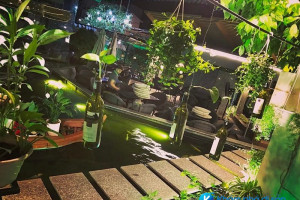
![[Huế] điều chỉnh giá vé tham quan các điểm di tích ở Huế vào tháng 9 [Huế] điều chỉnh giá vé tham quan các điểm di tích ở Huế vào tháng 9](/img/300x200/khampha/2017/08/ngo-mon-dai-noi-hue-khamphadisan-6.jpg)


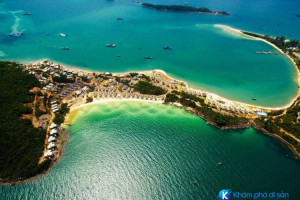
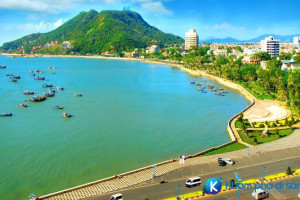
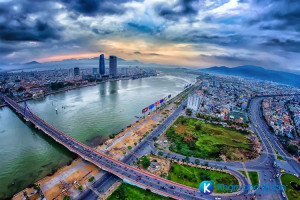


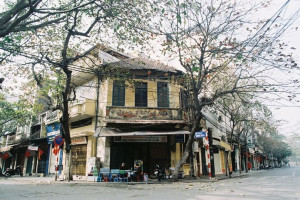
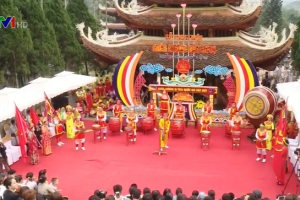






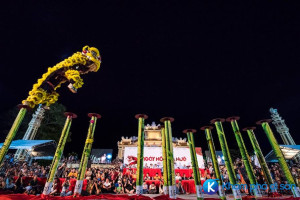
![[Video] Tour du lịch hoàng hôn trên phá Tam Giang – Công ty Du Lịch Đại Bàng [Video] Tour du lịch hoàng hôn trên phá Tam Giang – Công ty Du Lịch Đại Bàng](/img/300x200/khampha/2017/07/canh-dep-tren-pha-tam-giang-2.jpg)